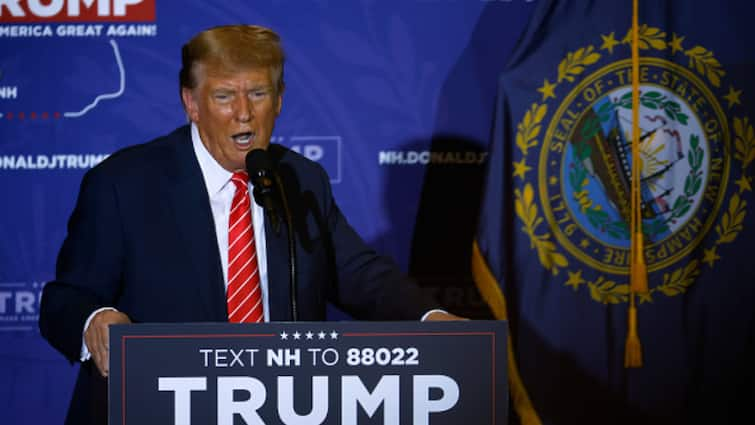Former US President Donald Trump has sparked a debate around digital currencies after his recent speech in New Hampshire. He vouched to block the creation of a Central Bank Digital Currency (CBDC) in the US and called it a ‘dangerous threat to freedom’. CBDCs are primarily digital representations of fiat currencies and as a concept. The idea of CBDCs has gained significant traction in several parts of the world including India.
In a video shared by Coinpedia on X (formerly known as Twitter), Trump said that he would never allow the creation of CBDCs to protect Americans from government tyranny.
During New Hampshire campaign, Donald Trump pledges to ban central bank digital currency, citing it as a dangerous threat.
Trump, joined by ex-candidate Vivek Ramaswamy, vows to prevent federal control over citizens’ money.
The former president argues that CBDC creation poses… pic.twitter.com/wI8EPXXKvT
— Coinpedia (@CoinpediaNews) January 18, 2024
If a nation starts conducting transactions via CBDC then soon it might go cashless and become eco-friendly. Additionally, those transactions would help remittance-dependent nations wire-in more capital from their diaspora that are working abroad as CBDC transactions will be fast and almost free in comparison to what money transfer services like Western Union process after cutting their commissions.
Trump’s Support For NFT & Hatred For Crypto
Trump’s statements against CBDC brought back the memories of his anti-crypto remarks that he made two years back. Earlier in 2021, he told Fox Business, “Bitcoin, it just seems like a scam. I don’t like it because it’s another currency competing against the dollar.” However, later he confused people about his stance on digital assets by releasing his collection of self-inspired NFTs in 2022.
He had released a collection of 45,000 fantasy cards called the ‘Trump Digital Trading Cards’. The NFTs are priced at 99 USD (roughly Rs. 8,200) and are based on the Polygon blockchain. Buyers will be able to purchase it in Ether (ETH) tokens and fiat currencies. This move was perceived to help Trump connect with a younger generation of voters.
This news is republished from another source. You can check the original article here

